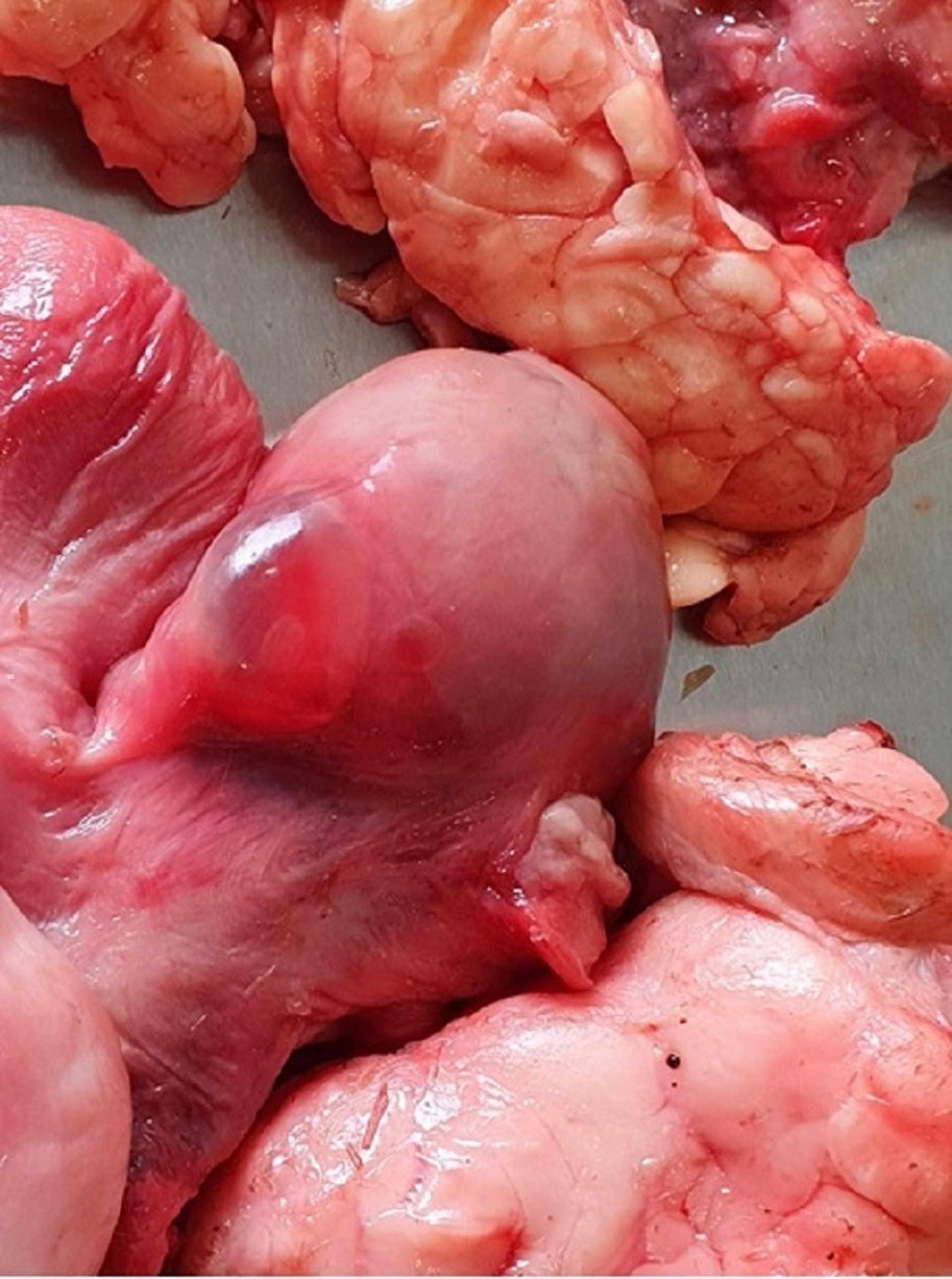Courtesy of Dr. Jonathan Statham.
Cystic ovary disease is an example of reproductive failure in large animals. It is the most common example of ovulation failure. Among domestic animals, cystic ovary disease is the most common in cattle, particularly dairy breeds; however, it occurs sporadically also in dogs, cats, pigs, and mares.
Three ovarian structures in cattle may include the term "cyst": follicular cysts, luteal cysts, and cystic corpus luteum. In contrast to the first two, a cystic corpus luteum (a corpus luteum with a cavity or "lacuna") may arise after normal ovulation and does not disrupt the reproductive cycle.
The two pathologic forms of bovine cystic ovary disease—follicular cysts and luteal cysts—are etiologically and pathophysiologically related but clinically different. Both are characterized by the presence of a fluid-filled structure in the ovary that is > 25 mm in diameter, persists for> 10 days, and is associated with abnormal reproductive performance.
Corpora lutea with lacunae are a normal stage or variation of corpus luteum development and are found in normally cycling and pregnant cows without concurrent abnormal reproductive performance. The lacuna has a homogeneous, liverlike consistency similar to that of the base of a typical corpus luteum.

